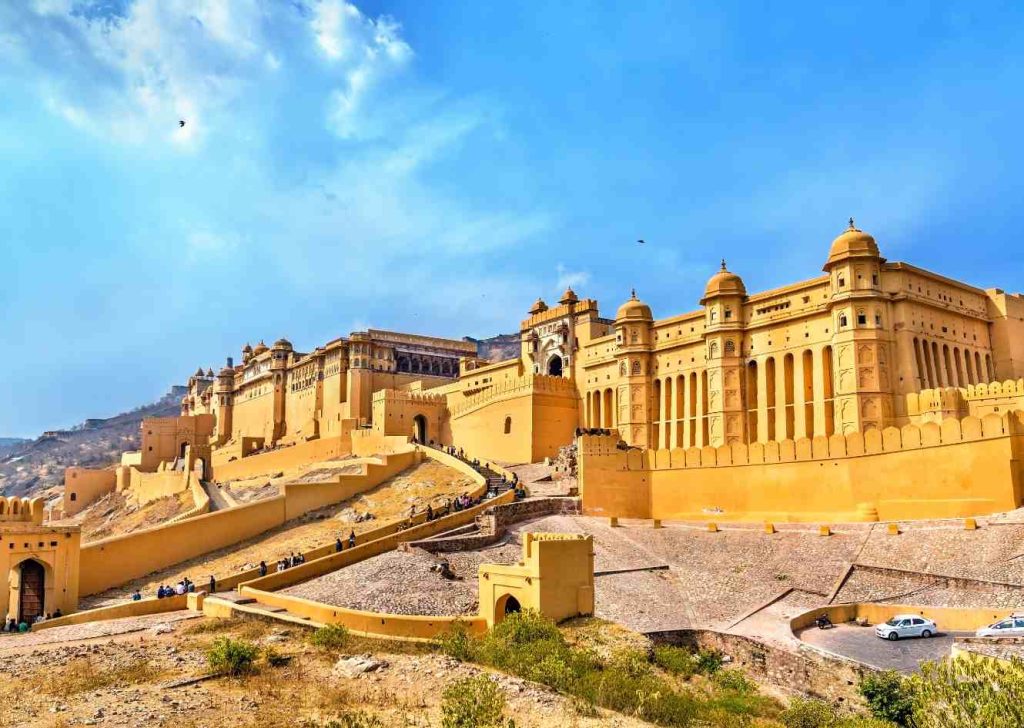Jaipur The Royal Splendor of The Pink City

Rich in culture, heritage, and history, Jaipur, the capital city of Rajasthan, embodies royal splendor and enchanting beauty. Its captivating palaces, grand forts, vibrant markets, and age-old traditions offer an exhilarating experience of a bygone era fused with a dynamic present. Fondly known as the ‘Pink City’ because of the characteristic rose hue adorning most of its buildings, Jaipur is a haven for any travel enthusiast.
Amer Fort and Palace: Situated on a hilltop, the magnificent Amer Fort leaves visitors spellbound with its Hindu and Sufi architecture blend. The fort, built with red sandstone and white marble, boasts intricate carvings, expansive courtyards, and stunning views of the surrounding valleys. The Sheesh Mahal, a room adorned with thousands of mirror tiles, is one of the highlights of the fort. At night, the fort’s sound and light show narrates its fascinating history, enhancing its grandeur.

Hawa Mahal: Known as the ‘Palace of Winds, Hawa Mahal, with its unique five-story exterior resembling a honeycomb, is a marvelous testament to Rajput architecture. This pink sandstone structure, constructed to allow royal ladies to observe the bustling city life unseen, consists of 953 small windows, known as ‘jharokhas,’ each embellished with intricate latticework.

The Palaces of Jaipur
City Palace: The Grand City Palace, still a royal residence, stands as a symbol of the royal heritage of Jaipur. The complex houses buildings like Mubarak Mahal and Chandra Mahal, each displaying a unique blend of Mughal and Rajput architecture. The museums within the palace exhibit a rich collection of royal costumes, weapons, and artifacts.

Jantar Mantar: A UNESCO World Heritage Site, Jantar Mantar is a marvel for astronomy enthusiasts. This observatory, constructed by Maharaja Jai Singh II, houses a collection of nineteen architectural astronomical instruments. The Samrat Yantra, the world’s largest sundial, is particularly noteworthy.
Jal Mahal: Literally translating to ‘Water Palace,’ Jal Mahal is a serene sight to behold. The palace, seemingly floating in the middle of the Man Sagar Lake, makes for a spectacular view, especially during the evening when it’s illuminated.
Nahargarh Fort: Perched on the edge of the Aravalli Hills, Nahargarh Fort offers panoramic views of the city below. It’s a popular spot for sunset views known for its stepwell, the Madhavendra Bhawan.

Albert Hall Museum: This is the oldest museum in Rajasthan and is a repository of artifacts, sculptures, paintings, and natural history displays. The building is an example of Indo-Saracenic architecture and is beautifully illuminated at night.
Jaigarh Fort: Overlooking the Amer Fort and Maota Lake, Jaigarh Fort is known for housing the world’s largest cannon on wheels, the ‘Jaivana Cannon.’ The fort was strategically important and had many wide water channels, part of a rainwater harvesting system.
Galtaji Temple: An ancient Hindu pilgrimage site, the Galtaji Temple is famous for its natural water springs. Set amidst lush greenery, the complex comprises several temples, with the Hanuman Temple being the most notable.
Culture and Heritage
For those looking to experience the vibrant local culture, a visit to the bustling bazaars of Jaipur is a must. Bapu Bazaar, Johari Bazaar, Tripolia Bazaar, and Chandpole Bazaar are renowned for their traditional handicrafts, textiles, gems, and jewelry.
Jaipur’s historical grandeur, architectural brilliance, and vibrant culture make it a must-visit destination in India. Whether you’re a history buff, an architectural enthusiast, a shopaholic, or a food lover, Jaipur has something captivating to offer everyone. With its warm hospitality, the city is a window into India’s royal heritage, waiting to be explored.
